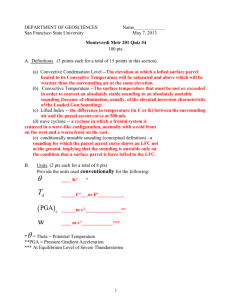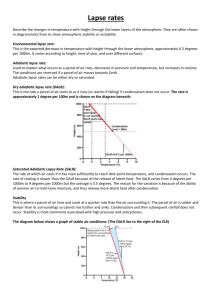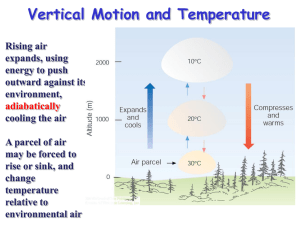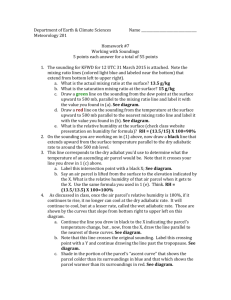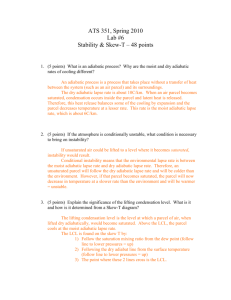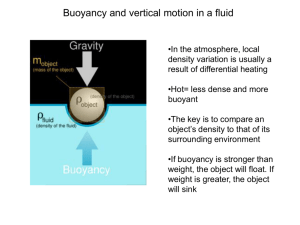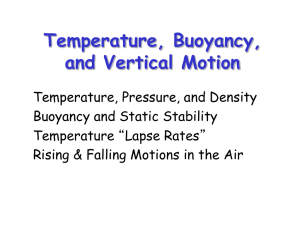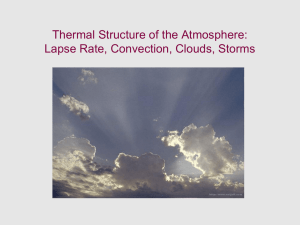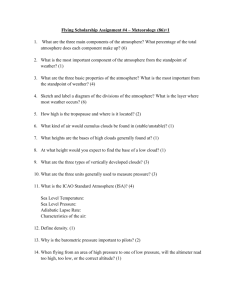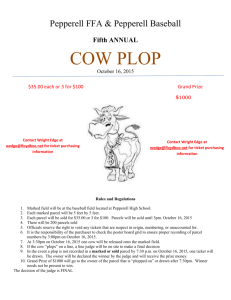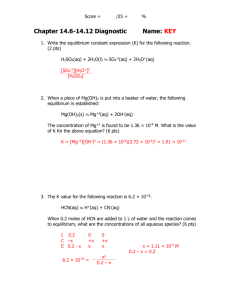Quiz4_Sp13 - San Francisco State University
advertisement
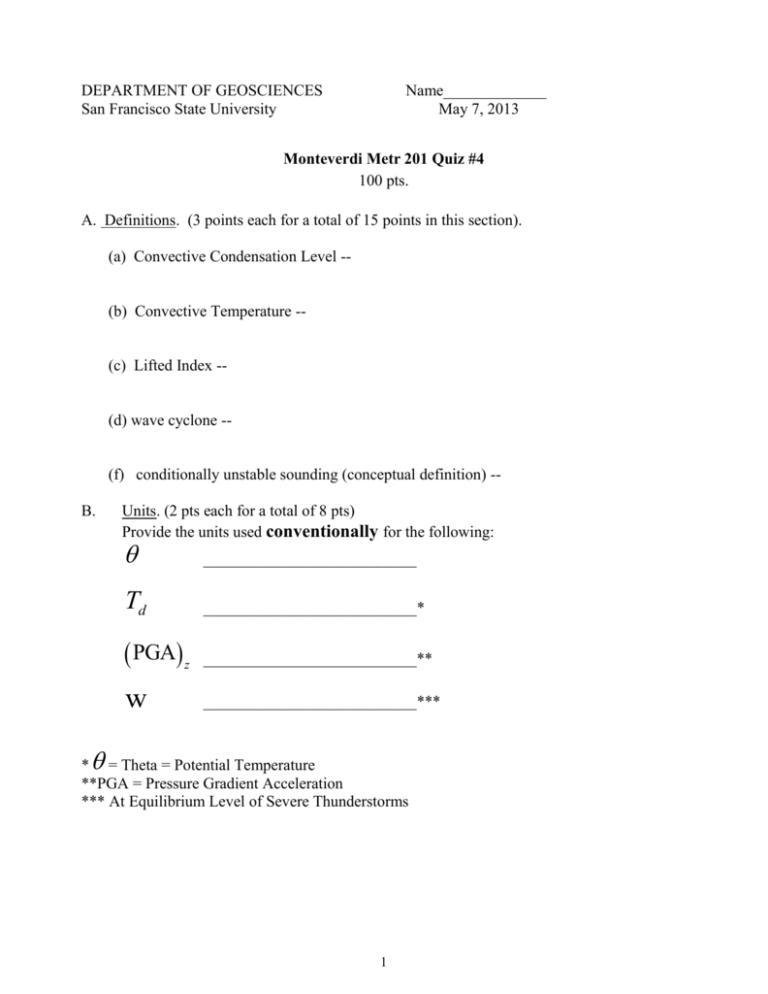
DEPARTMENT OF GEOSCIENCES San Francisco State University Name_____________ May 7, 2013 Monteverdi Metr 201 Quiz #4 100 pts. A. Definitions. (3 points each for a total of 15 points in this section). (a) Convective Condensation Level -(b) Convective Temperature -(c) Lifted Index -(d) wave cyclone -(f) conditionally unstable sounding (conceptual definition) -B. Units. (2 pts each for a total of 8 pts) Provide the units used conventionally for the following: q ___________________________ Td ___________________________* ( PGA) z ___________________________** w ___________________________*** q * = Theta = Potential Temperature **PGA = Pressure Gradient Acceleration *** At Equilibrium Level of Severe Thunderstorms 1 C. Sounding (3 pts each for a total of 27 points in this section). Examine the sounding (two copies) given below. Note the locations given at A, B, C, D, E, F, G and H. Two copies of are provided. One of the copies has only the standard parcel ascent curve for this case. The other copy has colored areas (red and blue) added to which letters F and E, respectively, refer. 2 1. This sounding is (choose the correct answer by circling your choice) (a) (b) (c) (d) Absolutely stable Absolutely unstable Conditionally unstable None of the above 2. The line (solid red) indicated by the letter A is the (a) (b) (c) (d) (e) Parcel Ascent Curve Dew Point Temperature Lapse Rate Environmental Lapse Rate Condensation Lapse Rate Dry Adiabatic Lapse Rate 3. The line (dashed red) indicated by the letter B is the (a) (b) (c) (d) (e) Parcel Ascent Curve Dew Point Temperature Lapse Rate Environmental Lapse Rate Condensation Lapse Rate Dry Adiabatic Lapse Rate 4. The level indicated by the letter C is the (a) (b) (c) (d) (e) Equilibrium Level Lifting Condensation Level Level of Free Convection Equilibrium Level Convective Temperature 5. The level indicated by the letter D is the (a) (b) (c) (d) (e) Equilibrium Level Lifting Condensation Level Level of Free Convection Equilibrium Level Convective Temperature 3 6. The area colored blue indicated by the letter E is (a) the layer in which the lofted parcel is warmer than the surrounding air at the same elevation (b) the layer in which the lofted parcel is colder than the surrounding air at the same elevation (c) proportional to the Convective Available Potential Energy (CAPE) (d) the layer through which the air parcel will be freely buoyant (will loft without any forcing) (e) Choices (a), (c) and (d) are correct. 7. The area colored red indicated by the letter F is (a) the layer in which the lofted parcel is warmer than the surrounding air at the same elevation (b) the layer in which the lofted parcel is colder than the surrounding air at the same elevation (c) proportional to the Convective Available Potential Energy (CAPE) (d) the layer through which the air parcel will be freely buoyant (will loft without any forcing) (e) Choices (a), (c) and (d) are correct. 8. The line (thin black) indicated by the letter G is the (a) (b) (c) (d) (e) Parcel Ascent Curve Dew Point Temperature Lapse Rate Environmental Lapse Rate Condensation Lapse Rate Dry Adiabatic Lapse Rate 9. The level indicated by the letter H is the (a) (b) (c) (d) (e) Equilibrium Level Lifting Condensation Level Level of Free Convection Equilibrium Level Convective Temperature 4 D. Short Answer. (Answer below or on back in complete sentences, with subject, verb and object in each sentence, please) (50 points in this section) 1. The philosophical underpinning of sounding analysis is something called “parcel theory.” In a few sentences, briefly describe what is meant by “parcel theory.” (17 pts) 2. Severe weather meteorologists in the Great Plains often examine maps of surface dew points as part of the suite of products they use in their “forecast decision tree.” Give and briefly describe TWO reasons for this. (17 pts) 3. Severe weather meteorologists in the Great Plains know that wave cyclones play an important role in setting the environment for severe convection. Briefly discuss ONE factor associated with a wave cyclone located over Oklahoma that might encourage severe thunderstorms over Texas. (16 pts) 5
